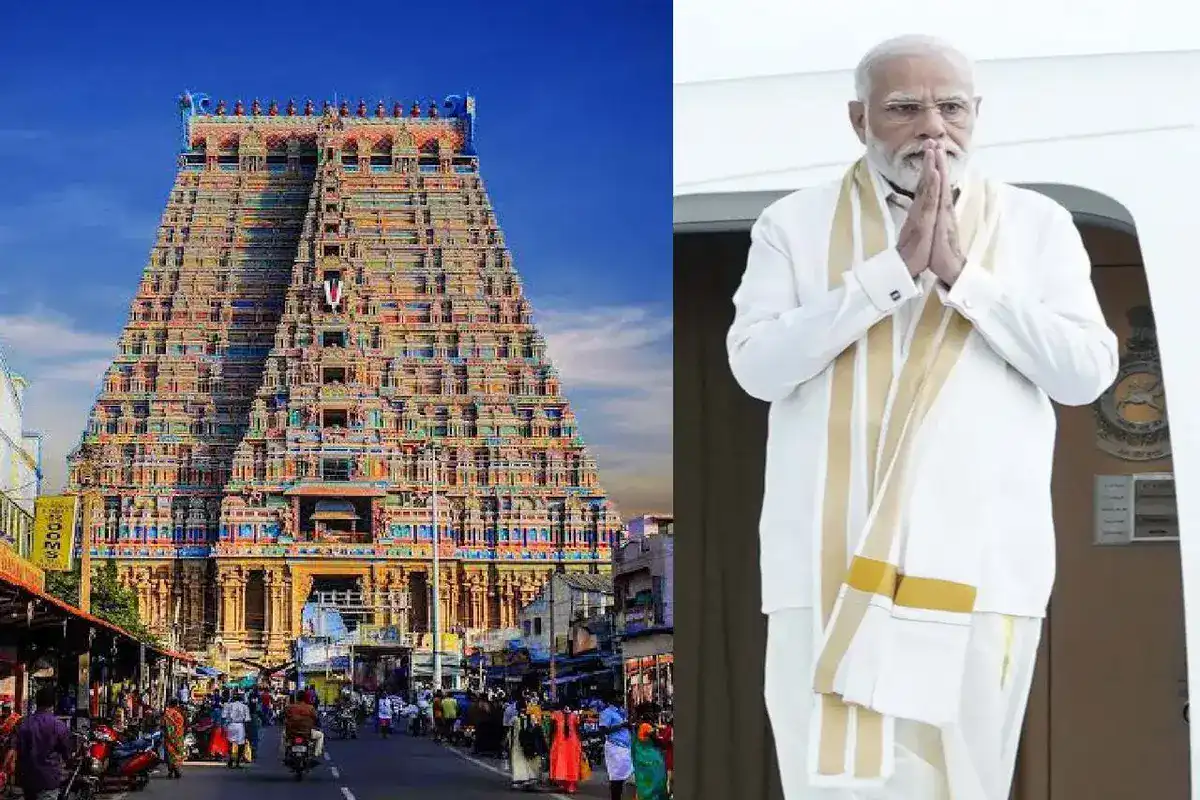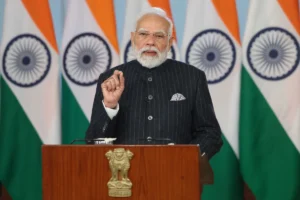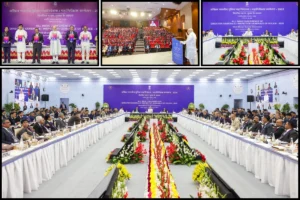
PM to visit multiple temples in Tamil Nadu
According to an official statement from the Prime Minister’s Office (PMO), he is slated to engage in a program at the Sri Ranganathaswamy Temple in Tiruchirappalli, Tamil Nadu, at approximately 11 am on Saturday. During his visit, Prime Minister Modi will attentively listen to scholars reciting verses from the Kamba Ramayanam, as outlined in the released statement.
In preparation for the inauguration of the Ram Temple on January 22, Prime Minister Narendra Modi has planned visits to various temples in Tamil Nadu on January 20-21.
According to an official statement from the Prime Minister’s Office (PMO), he is slated to engage in a program at the Sri Ranganathaswamy Temple in Tiruchirappalli, Tamil Nadu, at approximately 11 am on Saturday. During his visit, Prime Minister Modi will attentively listen to scholars reciting verses from the Kamba Ramayanam, as outlined in the released statement.
PM Modi To Visit Rameswaram
Following the aforementioned event, Prime Minister Modi is scheduled to arrive in Rameswaram at 2 pm to partake in ‘darshan’ and ‘pooja’ at the Sri Arulmigu Ramanathaswamy Temple. In the preceding days, the Prime Minister visited various temples, engaging in the chanting of Ramayana in diverse languages such as Malayalam, Marathi, and Telugu. During his visit to this temple, he will be participating in the ‘Shri Ramayana Paryana’ program.
As per the statement from the Prime Minister’s Office (PMO), eight different traditional mandalis will recite Ramkathas in Sanskrit, Awadhi, Kashmiri, Gurumukhi, Assamese, Bengali, Maithili, and Gujarati languages, recounting the episode of Shri Rama’s return to Ayodhya.
Later in the evening, Prime Minister Modi is set to join a ‘bhajan sandhya’ at the temple, where devotional songs will resonate within the temple complex.
Subsequently, on January 21, the Prime Minister will proceed to the Kothandaramaswamy Temple at Dhanushkodi for ‘pooja’ and ‘darshan.’ Following this, a brief visit to Arichal Munai, believed to be the location where Ram Setu was constructed, is on the itinerary.
Sri Ranganathaswamy Temple
Located in Srirangam, Trichy, this temple stands as one of the oldest temple complexes in India, with references in ancient texts such as the Puranas and Sangam era texts, as mentioned in an official statement. Renowned for its architectural splendor and numerous iconic ‘gopurams,’ the temple is a symbol of historical and cultural significance.
Dedicated to Sri Ranganatha Swamy, a reclining form of Lord Vishnu, the temple holds a special place in Vaishnava scriptures. According to legend, the idol worshipped here has a connection to Ayodhya, as it is believed to be the same image of Vishnu that was originally worshipped by Sri Rama and his ancestors. It is said that Sri Rama gave this idol to Vibhishana, who, on his way to Lanka, fixed it in Srirangam.
The temple’s rich history is intertwined with the teachings of Sri Ramanujacharya, a revered philosopher and saint. Additionally, the significance of the temple extends to cultural milestones, with the Tamil poet Kamban presenting the Kamba Ramayanam at a specific location within its premises.
Sri Arulmigu Ramanathaswamy Temple
The primary deity venerated in the Rameswaram temple is Sri Ramanathaswamy, a manifestation of Lord Shiva. According to widespread belief, Lord Rama and Sita installed and worshipped the main lingam in this temple. Renowned for its exquisite architecture, the temple boasts one of the lengthiest corridors among all temples. As mentioned in a statement from the Prime Minister’s Office (PMO), this sacred site is integral to the ‘char dhams,’ including Badrinath, Dwarka, Puri, and Rameshwaram, and is also recognized as one of the 12 Jyotirlingas.
Kothandaramaswamy Temple, Dhanushkodi
Situated in the sacred locale of Dhanushkodi, the temple is consecrated to Sri Kothandarama Swamy, signifying Rama adorned with the bow. According to legends, it is at this revered site that Vibhishana encountered Lord Rama, seeking refuge and divine protection.
To read more such news, download Bharat Express news apps


















